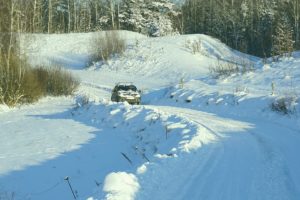 Winter weather transforms road conditions, demanding heightened awareness and adaptability from drivers. Key to navigating safely through snow and ice is adjusting your driving habits to the environment. One crucial tip is to reduce your speed and increase following distances. Snow and ice reduce traction, and slowing down provides more time to react to unexpected situations. Maintaining a safe distance from the vehicle in front of you is essential, as it allows for extended reaction time, reducing the risk of collisions on slippery roads. It’s also vital to avoid sudden maneuvers, such as sharp turns or abrupt lane changes, to prevent skidding and maintain control.
Winter weather transforms road conditions, demanding heightened awareness and adaptability from drivers. Key to navigating safely through snow and ice is adjusting your driving habits to the environment. One crucial tip is to reduce your speed and increase following distances. Snow and ice reduce traction, and slowing down provides more time to react to unexpected situations. Maintaining a safe distance from the vehicle in front of you is essential, as it allows for extended reaction time, reducing the risk of collisions on slippery roads. It’s also vital to avoid sudden maneuvers, such as sharp turns or abrupt lane changes, to prevent skidding and maintain control.
Check the Tires on your Vehicle before Winter
Preparing your vehicle for winter is a proactive step in ensuring safe travels. Start by checking your tires. Winter tires, designed for colder temperatures and enhanced traction, are a valuable investment for navigating icy roads. Ensure they are properly inflated and have sufficient tread depth. Regular vehicle maintenance is crucial, including checks on the battery, brakes, lights, and fluids. Cold temperatures can impact battery performance, so ensuring it’s in good condition is essential for reliable starts. Top up windshield washer fluid with a winter-grade solution to prevent freezing, and keep your gas tank at least half full to avoid fuel line freeze-up. Equipping your vehicle with an emergency kit, including items like blankets, a flashlight, non-perishable snacks, and a snow shovel, adds an extra layer of preparedness for unforeseen situations.
Notice the Winter Weather Conditions
Staying informed about weather conditions is paramount for planning winter drives. Check the forecast before embarking on a journey, and stay updated on any weather advisories or warnings. If conditions are severe, consider delaying your trip until conditions improve or exploring alternative transportation methods. Avoiding the use of cruise control on snowy or icy roads is another essential tip. Cruise control can reduce your ability to react quickly to changing road conditions, potentially leading to accidents. Instead, maintain manual control over your speed and use caution when accelerating or decelerating. Lastly, pay particular attention to bridges, overpasses, and shaded areas, as these tend to freeze first. Approach these areas with caution, reduce your speed, and avoid sudden movements to minimize the risk of skidding.
Successfully navigating winter weather requires a combination of cautious driving practices and thorough vehicle preparation. Slowing down, maintaining distance, and avoiding sudden maneuvers are fundamental driving tips for winter conditions. Preparing your vehicle, staying informed about the weather, and exercising caution in specific road areas contribute to a safer winter driving experience. By incorporating these tips into your winter driving routine, you can mitigate risks and enjoy a more secure journey through challenging weather conditions.




Recent Comments